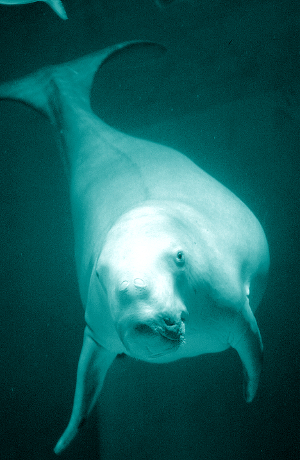Mammals likely stuck in sea
 Researchers say aquatic mammals may never be able to re-adapt to a terrestrial lifestyle.
Researchers say aquatic mammals may never be able to re-adapt to a terrestrial lifestyle.
A recent international study examined over 5,800 species of living mammals, and highlights the irreversible nature of adaptations to aquatic environments, making a return to land impossible for these species.
Throughout the evolutionary history of vertebrates, there have been numerous transitions from land to water environments.
However, this new research suggests that once mammals make the transition to aquatic life, the adaptations that occur become irreversible.
While some semi-aquatic transitions were found to be reversible, the study identified a threshold beyond which aquatic adaptations become permanent.
Adapting to an aquatic lifestyle involves a series of changes, including enhancements to swimming ability, alterations in sensory systems, reproduction, feeding strategies, and lung capacity.
Certain ancient mammalian lineages, such as stem cetaceans and stem sirenians, demonstrate stepwise evolution from partial to fully aquatic forms. These adaptations involve modifications to locomotion and sensory systems, gradually leading to complete aquatic lifestyles.
The irreversibility of aquatic adaptations in mammals can be attributed to a combination of intrinsic and extrinsic mechanisms.
Intrinsic mechanisms involve the loss of selective pressure on non-expressed genes and the accumulation of deleterious mutations. For example, hind-limb reduction in tetrapods, including whales, is associated with the gradual loss of gene expression. Adaptive changes in gene expression and regulation, such as the Homeobox (Hox) gene, have played a crucial role in the evolution of fully aquatic mammals.
Extrinsic mechanisms, on the other hand, relate to morphological adaptations and changes in feeding strategies. Aquatic lineages exhibit distinct cranial morphology, enabling them to exploit different niches during their transition from land to water. Additionally, competition with incumbent terrestrial carnivores may have prevented reversals by limiting the adaptive space available to fully aquatic mammals.
The study also highlights a strong correlation between adaptations to aquatic environments and an increase in body mass.
This phenomenon aligns with Bergmann's rule, which states that larger animals have a lower surface-to-volume ratio and therefore experience less heat loss, allowing them to withstand colder temperatures.
Aquatic environments provide larger amounts of protein, supporting the sustenance of larger carnivores. However, the constraints of thermoregulation in water may limit the minimum body size of aquatic mammals.
Interestingly, the study found a strong association between carnivory and adaptations to aquatic environments, suggesting that food resources play a vital role in the colonisation of water.
Semi-aquatic species, including certain rodents, demonstrate a preference for carnivorous diets and larger body mass. The scarcity of aquatic herbivores is thought to be influenced by the limited usability of resources in colder water, as enzymes required to break down plant material necessitate higher temperatures.








 Print
Print